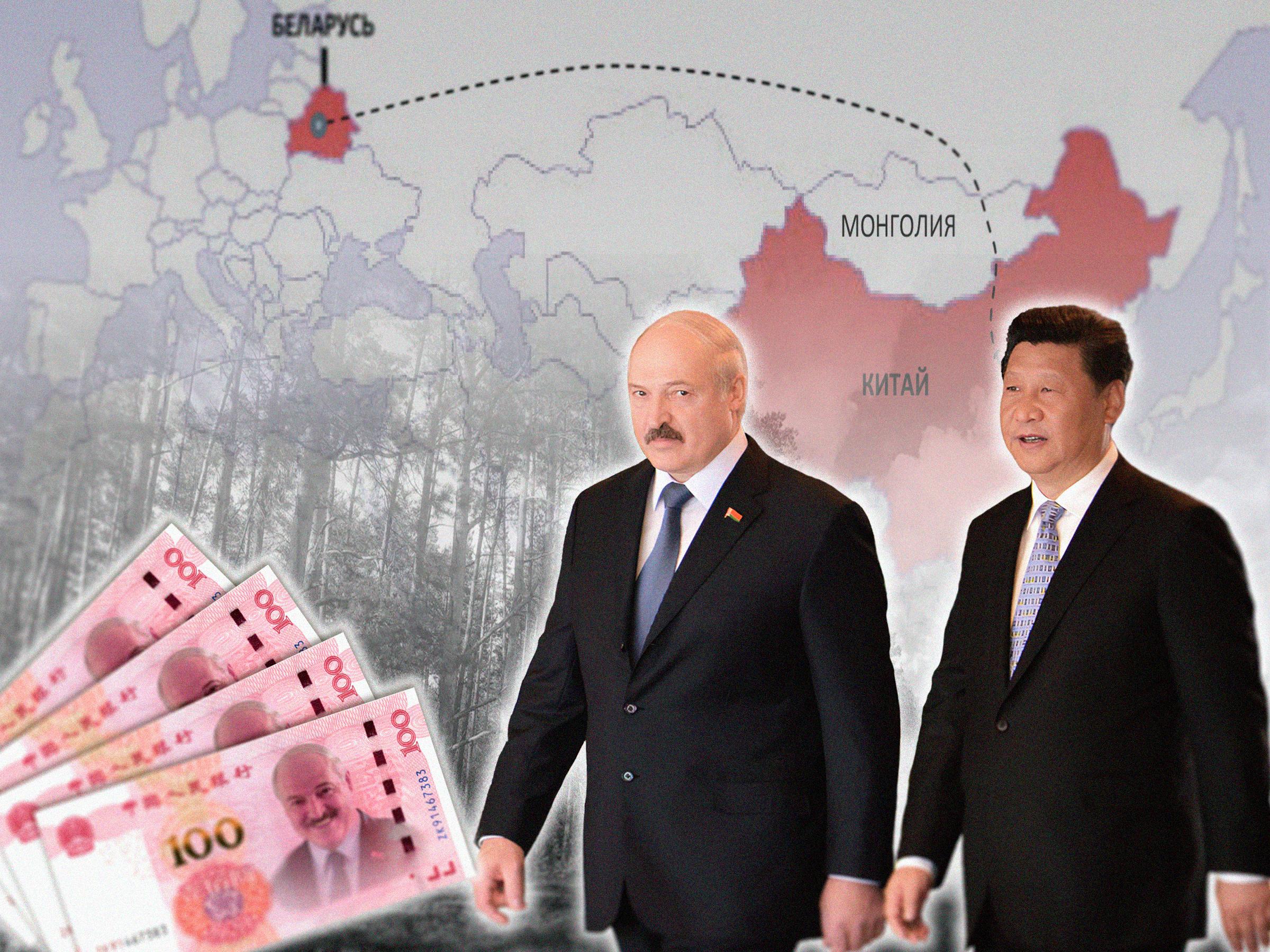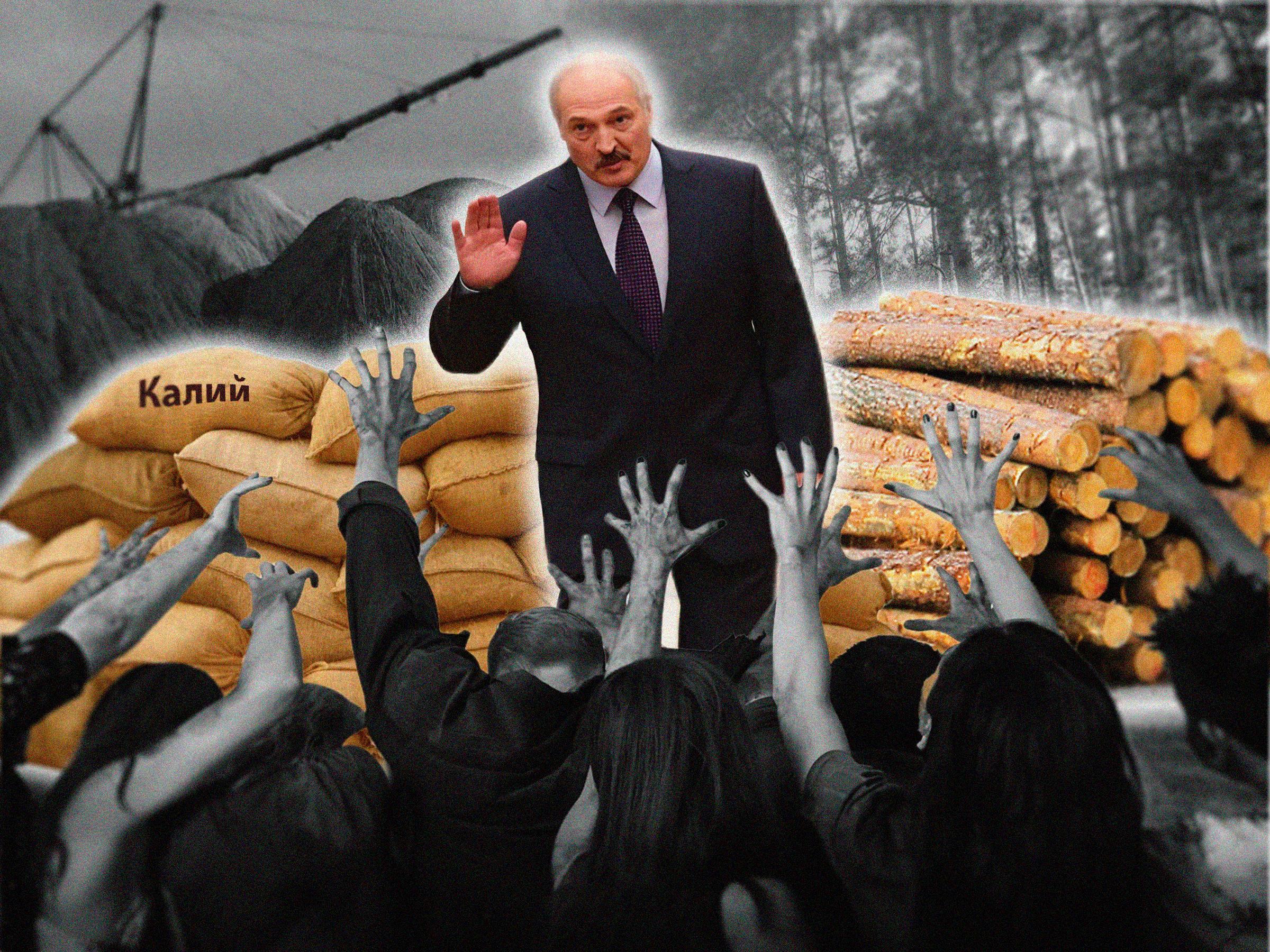In 2023, Belarusian exports reached a record high of over $40 billion. This achievement surpasses all previous records in the country’s independent history, except for the years 2011-2012, which were marred by the solvents and dilutants scandal, a large-scale scheme involving the re-export of Russian oil products to EU countries.
This occurred during a time of high global demand for the three primary items of Belarusian exports: potash fertilizers, petroleum products, and timber. In 2022, Western countries imposed sanctions on the supply of these goods from Belarus, and the country almost completely lost the European market. However, Belarusian exports rebounded last year, and in some cases, even experienced growth.
Turning East
Before the imposition of sanctions, Belarus exported 60,000 cubic meters of sawn timber per month. In 2023, the supply had increased to 77,000 cubic meters. This was announced last February by the Minister of Forestry, Aliaksandr Kulik.
China became the main buyer of Belarusian timber. While before the sanctions, the country purchased 37% of its exported timber from Belarus, in 2023, its share increased to 52%. Currently, nearly a quarter of Belarusian timber exports are directed to Azerbaijan, which is a significant increase from its pre-sanction share of 4%. Additionally, 6% of the exports are sent to Russia.
Fertilizer exports also recovered. Last year, Belarus exported nearly 9.5 million tonnes of potash. This is approximately how much our country used to export before the sanctions. The main buyer is again China. A sixth part (17.2%) of exported potash was delivered there by container trains. Russian consumers received 2.9%. Almost 80% of the remaining amount was transported to different ports in Russia. This data was published by the Community of Railroad Workers.
It is unclear which countries received the fertilizers from Russian ports. Neither Belarus nor Russia publishes such statistics. However, it appears that nearly all Belarusian potash exported through Russian ports is also destined for China.
In February 2024, STV TV channel reported that Belarus’ key export to China in 2023 was potash fertilizers. According to the piece, they represented over 50% of the shipment’s value. Based on Chinese customs statistics, Belarus’ exports to China increased by 44.5% last year, exceeding $2.6 billion. As a result, potash supplies from Belarus amounted to over $1.3 billion.
The Railroad Workers Community also provides data on the average price of Belarusian potash exports. It fell from $382.3 per tonne in 2022 to $188 in 2023. It turns out that China bought about 7 million tonnes of Belarusian fertilizers last year. That is, it accounted for almost three-quarters of Belarus’ total potash exports.
Additionally, the average export price from Belarus indicates that the authorities are compelled to sell fertilizers at a 50% discount. The average world potash price last year was $383 per tonne. Fitch Ratings forecasts a further decline in potash prices. Therefore, the profitability of supplying Belarusian fertilizers to China, especially considering the discount, will decrease.
Exports of petroleum products from inexpensive Russian crude have returned to pre-sanctions levels in 2023. Technically, they're being sold to Russia. However, according to BEROC economist Anatol Kharytonchyk, a significant portion of oil products are delivered to the United Arab Emirates and then redirected to other countries, as reported by the Zerkalo online media. Last year, imports of petroleum products from the UAE to the EU increased by more than a third compared to 2022. Additionally, there was a significant rise in demand in countries where Belarus had previously exported oil products, such as Germany, Poland, and the Netherlands.
The end of the oil manoeuvre
In 2024, a significant era in the history of the Belarusian economic model ended. Russia has ruled out the ‘tax manoeuvre’ by abolishing export duties on oil and oil products for third countries. This was one of the most important Russian subsidies for Belarus. It involved not paying customs duties to Russia for crude oil, which resulted in a lower cost than the world price. When exporting oil products produced from this inexpensive oil, customs duties sank into the Belarusian public purse.
Moscow now uses a less transparent method, known as a damping mechanism or reverse excise tax, when making payments to Belarusian refineries. The idea is that the Russian government provides a subsidy directly to oil companies, including Belarusian refineries, to compensate for the difference between the price of fuel on the Russian market and higher export prices.
The government plans to increase revenues from using the damping mechanism by 70% in 2024, up to 2.1 billion Belarusian rubles (approximately $646 mln; this and further conversions are provided based on the National Bank of Belarus exchange rate on 27 March 2024). This was stated by Finance Minister of Belarus Yury Seliverstau last year. However, the success of this scheme will largely depend on the price of oil. In 2023, Belarus was expecting to receive approximately 1.7 billion Belarusian rubles (around $523 mln), but the real figure was only about 1.3 billion Belarusian rubles (around $400 mln).
The frightening Chinese expansion
Exports have increased because Western companies have withdrawn from the Russian market, among other reasons. Russians began to buy more Belarusian products.
For instance, in 2023, BelGee had planned to produce 35,000 Geely cars but ended up producing almost twice as many, that is, 67,800. Of these, 52 thousand were exported to Russia. However, Geely cars are only assembled in Belarus. The technology is Chinese, the parts come from China, too.
Chinese cars are quickly gaining dominance in the Russian market. By the second half of 2022, their market share in Russia had already increased to 33%, up from 3.7% at the beginning of the year. By the end of 2023, the rise was over 60%. Last year, Russians purchased 253% more Haval cars than in 2022, 207% more Chery cars, and 244% more Geely cars.
LADA remains the best-selling brand in Russia. LADA sales grew by 87%, GAZ – by 33%, and UAZ – by 10%. However, that’s growth after a nearly 60% decline in the car market in 2022. Compared to 2021, sales of Russian cars have remained virtually unchanged.
Another example is trucks. Last year, Belarus’ MAZ sold almost one and a half times more vehicles in Russia than in 2022. However, its presence in the Russian market decreased from 5.24% to 4.41%. GAZ lost a quarter of its previous market share. KAMAZ yielded almost half. Their place is gradually being taken by Chinese manufacturers. Sitrak almost quadrupled its Russian market share to 16.45% over the year. Now it is the second most popular truck in Russia. Shacman comes third with a share of 14.45%. The fourth place is occupied by FAW. It doubled its share to 11%.
In the summer of 2023, Belarusian Deputy Prime Minister Mikalai Snapkou expressed concern about the significant growth of Chinese machinery manufacturers in the Belarusian and Russian markets. He stated that Belarusian and Russian manufacturers are not only losing the truck market, but also the markets for “tractors, loaders, dump trucks, and buses”. This is because Chinese equipment is priced two or even three times lower.
Military commissions
Weapons are another export item on the rise in Belarus. The domestic military industry has increased supplies of equipment to Russia. This was recognised last year by the Chairman of the Belarusian State Military-Industrial Committee, Dzmitry Pantus. He said this was due to the war in Ukraine, but declined to give any figures.
Volumes can be assessed by train shipment numbers. Between January 2022 and January 2023 alone, more than 130,000 tonnes of ammunition were exported from Belarus to Russia. This is the data provided by the Union of Belarusian Railroad Workers.
Last year, Belarus began assembling 122-mm artillery shells. This is the calibre used by the Russian Grad MLRS. In August, the State Military-Industrial Committee of the Republic of Belarus announced that the country will commence mass production of combat drones by the end of 2023.
Export successes of the Belarusian military industry are not only connected with Russia’s attempts to seize Ukrainian territories. Belarus also supplies arms to Uzbekistan, for example. Between 2017 and 2023, trade between the countries increased by almost three and a half times. Mainly at the expense of “sector-specific goods”.
After coming to power in 2016, Uzbek President Shavkat Mirziyoyev initiated a significant rearmament program for the Uzbek army anticipating the withdrawal of U.S. troops from neighbouring Afghanistan. Mirziyoyev has ramped up arms purchases from Russia relying on loans from Moscow.
Traditionally, it is Belarus that maintains and repairs Soviet and Russian military equipment. Following Mirziyoyev’s visit to Minsk in 2019, the two sides agreed that our country will not only maintain equipment for Uzbekistan but also help modernize it. The cooperation roadmap, agreed upon during the visit, outlines that the countries will collaborate to repair two Su-25 fighters at the Chirchik Aircraft Repair Plant in Uzbekistan. Additionally, they will explore the potential for modernizing future aircraft of the same model.
Mirziyoyev and Lukashenko also implemented a project with the participation of the Belarus-based company Midivisana, which produces mobile command posts and mobile drone-based terrain observation systems.
The export miracle is coming to an end
Despite the sanctions, some Belarusian goods are still being exported to Europe. For instance, timber of Belarusian origin worth tens of millions of euros is imported into the EU disguised as products from Kazakhstan or Kyrgyzstan. The Belarusian Investigative Center talked about these schemes in the investigations “Bypassing the sanctions. Belarusian wood enters the EU under sham papers” and “Fake made in Belarus. How European border guards allow sanctioned timber into the EU”.
However, sanctions evasion is not the main reason for the unexpectedly high indicators of Belarusian exports last year. The main reason for its growth is the high global demand for commodities exported by Belarus and its redirection to third countries (mainly China). The second significant factor is the expansion of the Russian domestic market for Belarus.
But these factors are temporary. Prices for potash and petroleum products are expected to continue to fall in 2024, according to global analysts. Consequently, revenues from their exports will also fall. And in Russia, we found, Chinese goods are displacing Belarusian products.






